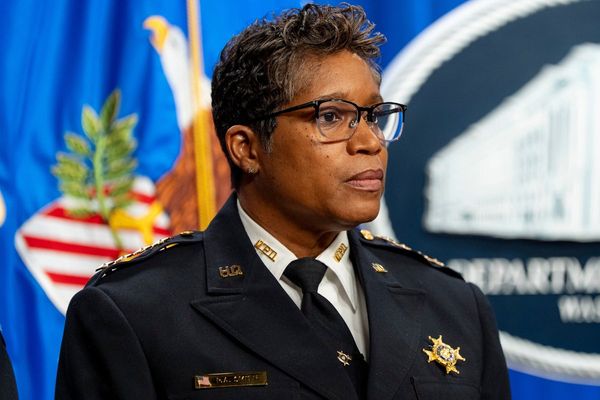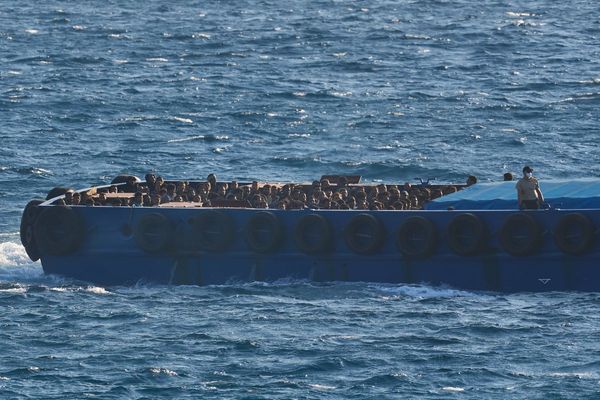Before India was split into two separate states in 1947, 97-year-old Kailash Bhatnagar describes her life in the city of Lucknow in northern India as quiet and peaceful.
"We never felt that we were threatened by others," she tells ABC RN's The History Listen.
Mrs Bhatnagar could never have imagined the chaos and bloodbath that would follow the partition of India, as the split is known.
Nor could she know that her life — and those of millions of people around her — would be changed forever.
A nation split
Colonial rule in India, Britain's largest colony for nearly 200 years, ended on August 15, 1947.
At the same time, the British empire partitioned the country into two: Hindu-majority India and Muslim-majority Pakistan.
Why?
Some describe a "myth" of irreconcilable differences between those of different religions, others point to the collapse under British rule of "old communities and the simplification of complex identities", and others still argue that the Brits considered a divided Pakistan "would be a better strategic ally".
BP Sharma grew up in a Hindu family in Lahore, and he remembers how tensions started to build between Muslims and Hindus in the lead up to partition.
"At the train stations when you had a drink of water from a tap, the railway authority provided separate cups for Muslims and Hindus," he says.
"But my parents told me it was never like that when they were young. It started only when the partition wave started."
For centuries, in certain areas of India, Hindus, Muslims, Sikhs, Jains and Buddhists had lived together peacefully.
Deborah Nixon, a historian from Sydney's University of Technology, says relations between Muslims and Hindus started to change after the British began ruling India in 1858.
"The presence of the British and this sort of mania for categorising things [may have] hardened the lines" between Muslims, Hindus and Sikhs, "and made these differences more exacerbated", she says.
British naval officer Lord Mountbatten was sent to India in March 1947 to oversee partition, and he planned for it to unfold over 15 months.
But he soon had to change his plans: unrest was mounting in India and "there was pressure on Mountbatten to 'get the job done'", Dr Nixon says.
He pulled the date forward to August 15, 1947. And so, on government orders, a nation of 340 million people was to be divided in a matter of months.
The official border between India and Pakistan wasn't even announced until three days after partition had already started.
"Of course, this was insane at one level because there wasn't time to inculcate people into the notion of what was going to happen to them," Dr Nixon says.
"We always talked about partition at home. We [understood] that rules change, but people don't need to move as a result," Sharada Sharma says.
"We all thought of ourselves as educated and safe and didn't imagine we'd have to move."
She and her family were sadly to be proven wrong.
A new fear of being a minority
"There was a very febrile atmosphere amongst people," Dr Nixon says.
She describes partition as a "catastrophic rupture in the history of India and Pakistan".
Migration wasn't mandated, but increasingly people weren't safe to stay where they were.
"Nobody really knew what was going to happen. And people were very, very edgy about their own futures."
"There was so much restlessness and chaos happening that people … if they were in a minority where they were, they wanted to get out," Dr Nixon says.
More than 12 million people left their homes over a matter of months, between August 1947 and early January 1948.
Muhammad Israrul Haq was seven years old and living in the village of Bulanda in the Punjab region with his Muslim family.
He recalls his father coming home one day and saying to his mother, "[Get] whatever you can carry, we must leave now. We're going to Pakistan".
"I was unable to understand totally what's going on," Mr Haq says now. "We're leaving our home? Why?"
The difficult decision to leave
Approximately 12 to 15 million people were involved in the population transfer, Dr Nixon says.
Mr Haq, who was a child at the time, remembers horrific scenes.
After walking for nearly two or three weeks, "we were very weak", he says.
"A few of my relations, they died with dysentery, because clean water wasn't available, human waste was everywhere. You know, nobody cared about anyone. Humanity was there [and then it was] not there.
In Lahore, BP Sharma and his father and brother were packing to leave. Anti-Hindu slogans were being shouted outside their house, and someone tried to set their home on fire. When they threw rocks at their attackers, police began firing on them.
"We had a hurried meeting with our Hindu neighbours and we all decided to leave," he says.
When they finally crossed the Indian border and arrived at Amritsar station in Punjab, Sharma recalls: "My father was in shorts. I was in my pyjamas. And my older brother was still in a towel".
"We met someone who said, at least you have a towel. We have lost everything."
Mr Haq's family faced another tragedy on their long walk to Pakistan, with the sudden death of his newborn sister.
"She died on my older brother's shoulders, because there was no milk available [at] that time," he says.
His family had no means to dig a hole to bury her, but eventually found someone nearby to borrow a tool from.
"They said, 'Only two minutes, just dig the hole and bury her. That's all [the time] we can afford. We cannot stay here longer because otherwise we'll be killed'.
"And we buried her on the roadside. That's all, two months [old]."
'What is this country of ours?'
Dr Nixon describes as "staggering" the number of those who died or were killed during partition, in violence between civilians or from police.
Between one and two million people lost their lives.
"It was completely horrific," she says.
One of those deaths was that of Independence Movement leader Mahatma Gandhi.
A right-wing Hindu nationalist entered a crowd to assassinate Gandhi when he was heading for a group prayer in January 1948.
The death of Gandhi, known for his non-violent resistance, shocked the nation.
"When Gandhi was shot, for a few days we were frightened. We couldn't eat or do anything. We felt that if he could be killed, soon it might be our turn … everyone was very worried," Mrs Bhatnagar says.
BP Sharma was in school when Gandhi's death was announced.
"At first we thought that he had been shot by a Muslim. But when we came to know the killer was Hindu, we were stunned. We wondered, what is this country of ours?" he says.
Stories that need to be told
The impact of the violence during partition was felt for decades afterwards. Ordinary people had paid a heavy toll for a border between nations.
Muhammad Israrul Haq's son, Naeem, was raised in Australia surrounded by stories of partition.
"I grew up amongst a whole generation that witnessed the partition. My grandfather lost his wife, he lost his daughter, and my khala (aunt) was born, her name was Ghafura, she died of starvation, literally, that was in the refugee camp.
"The trauma of the partition, it really played out all their lives."
He wants people to remember their stories, and he worries time is running out to capture them.
"I don't think people truly can ever understand what they went through," he says.
"The most painful thing about all this is that they're all dying … It doesn't matter from which side, whether they are from India [or] from Pakistan, the stories need to be told and told again.
Editor's note: February 23, 2023: The article has been updated to specify that different religious groups had lived harmoniously in parts of India before partition. The original copy suggested this was the case in all of India.
RN in your inbox
Get more stories that go beyond the news cycle with our weekly newsletter.







